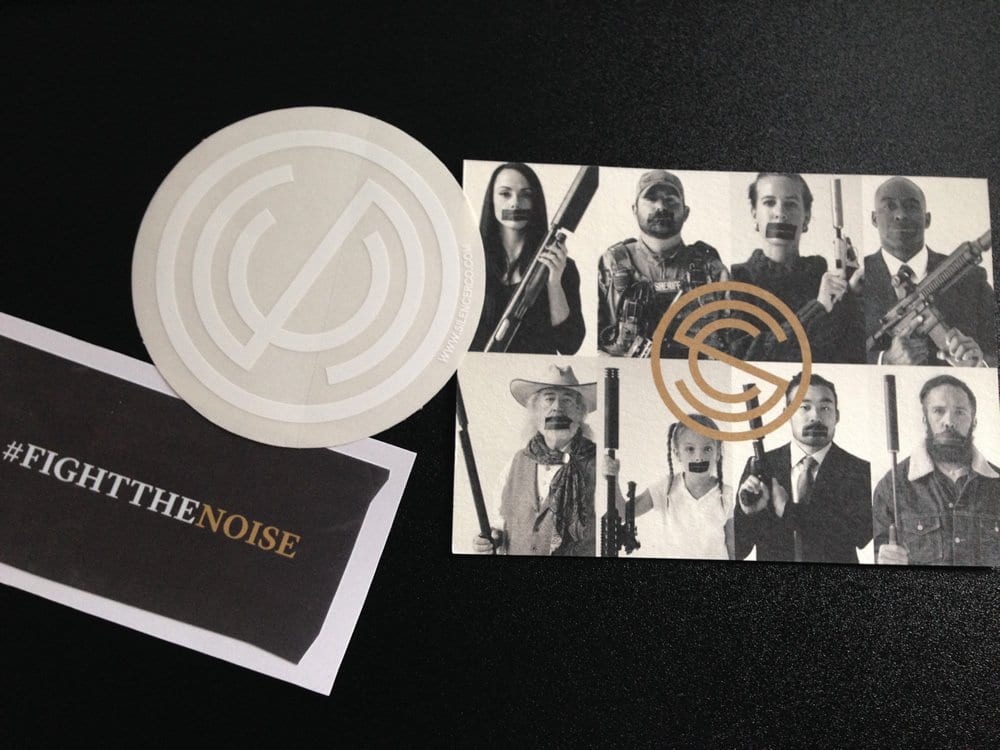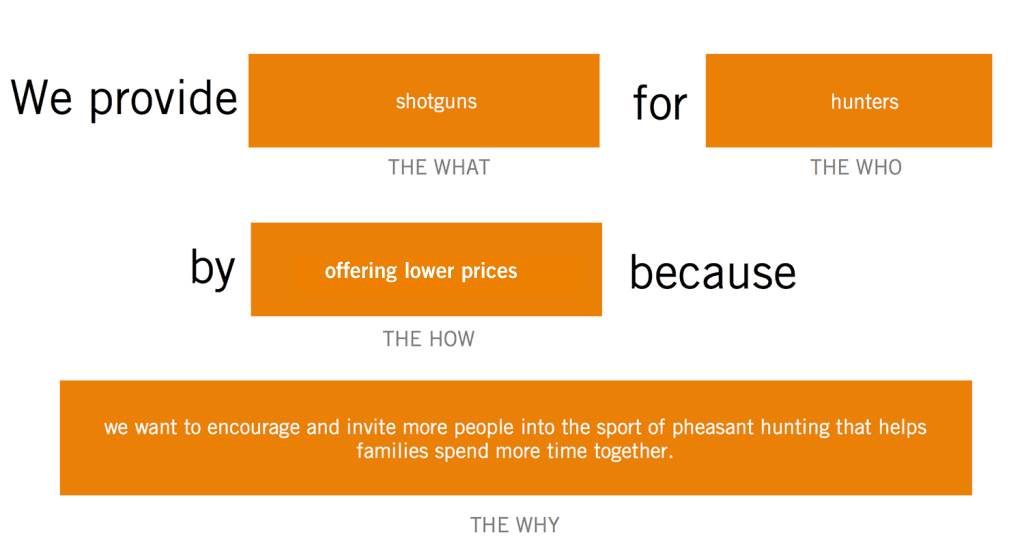
Most firearm companies struggle to carve out their own niche in the firearms industry and maximize their brand’s unique selling proposition (what makes you different from your competition) because they overlook a critical firearms marketing strategy used by today’s top brands.
With over 400* firearms and ammunition manufacturers (Source: First Research), 30+ different optic companies, 20+ suppressor companies and a thousand more who produce products in the $30+ Billion dollar firearms industry today, one might ask—if you’re starting a new firearms company—how is it possible to compete in this highly concentrated, regulated and competitive industry?
In this article, I want to draw your attention to one of marketing’s most valuable methodologies called “positioning”—and how you can use it to help your hunting or firearms brand break away from the pack.
For some context, let’s imagine you are trying to build a new shotgun brand for entry-level pheasant hunters that’s water-resistance, and that costs less than the current leading brands. I will use this example throughout the article, but first, let’s define what positioning is.
What is positioning?
The concept of “positioning” was created by market and branding pioneers Al Trout and Jack Reis back in the late 60’s and explained in their book: Positioning, The Battle for the Mind. If you haven’t read the book, I highly suggest checking it out.
Positioning is a marketing strategy that aims to make a brand occupy a distinct position, relative to competing brands, in the mind of the customer. Companies apply this strategy either by emphasizing the distinguishing features of their brand (what it is, what it does and how, etc.) or they may try to create a suitable image (inexpensive or premium, utilitarian or luxurious, entry-level or high-end, etc.) through outbound (advertising, trade show etc.) or inbound or content marketing. Once a brand is positioned, it is very difficult to reposition it without destroying its credibility. It is also sometimes called product positioning.
So how do you go about finding your new product’s positioning? There are two initial steps that you need to do first.
 1. Define your purpose
1. Define your purpose
What gets you out of bed in the morning besides the motivation to make money? What is the sole purpose of why your company exists? Customers are drawn to companies that stand for something other than just making a profit. (Source: Inc.) Is it to increase a hunter’s safety? Is it to bring a greater level of protection for concealed carry? Or using our shotgun example, is it to provide novice hunters a way to take up pleasant hunting without spending a fortune?
Whatever your purpose is, write it down and put it on your wall. When the mission isn’t going well and the vision seems like a mirage, a strong purpose will keep getting you out of bed and people coming back to work, day after day. (Source: Marty Neumeier)
2. Find the whitespace
Now that you know what your purpose is, you can define what your positioning is (positioning is tied very closely to purpose). Look for the “whitespace” in your intended market segment—meaning an open slot that other brands don’t occupy in your target customer’s minds.
As you look at the viability for your shotgun product—you know that there are three other shotgun brands in the market. One is higher priced, and the other two are positioned for more experienced hunters who are willing to pay a higher price leaving open a huge space for another brand to move in and offer an entry level shotgun at a slightly lower price point.
This is called finding the whitespace. A space in the market no other brand occupies.
3. Hack your competition’s positioning
A second step in finding and determining where the whitespace is—is to do some reconnaissance on your competition’s website, social media accounts and press releases to determine what piece of the market they seem to be going after.
If your competitors seem scattered and unfocused—meaning they are trying to be someone to everyone—than this can be used against them by focusing your brand messaging specifically at the customers you want to attract—in this case, entry-level pheasant hunters.
The narrower you can focus your brand and its message to a specific segment the more effective your marketing will be. (Source: Adage) You must seek to be known for “one thing,” that your customers will find viable, interesting and worth paying attention to. In today’s overcrowded and noisy marketplace of giveaways and me-too products, where the typical person is exposed to 250-500 advertisements a day—brands must find ways to stand out.
A great example taking place in the industry today is SilencerCo’s #fightthenoise campaign. This campaign’s goal is to pass legislation that lifts the NFA ban on suppressors. Not only is SilencerCo. the hottest brand going, but they are using this inventive marketing strategy to build awareness for a greater cause under the purpose of hearing/noise protection. In the process, this effort is allowing them to build and position their brand and sell silencers at the same time—while benefiting the industry as a whole. Brilliant.
3. Define your positioning statement
A positioning statement is the What, Who, How and Why of your brand. By creating a positioning statement, you further distil your brand’s message that gives you the key differentiators to expand upon in your advertising, content marketing, and elevator pitches. This also helps you and your team to understand what it is that makes your product unique that supports your sales efforts. You can’t sell efficiently without a clear positioning statement.
It’s important to point out that our hypothetical shotgun company “wants families to spend more time together.” This purpose will allow the brand to use imagery that reflects its purpose and have a more unique and memorable brand focus in the segment.
5. Qualitative customer interviews
Next, validate your assumptions by interviewing your intended customers. When it comes to positioning—it’s important to understand how your customers view your brand’s product and how they describe it. The adage, “It’s not what you say about your brand, it’s what they say about your brand” —is what counts. This is a crucial step in defining your positioning as it will further inform all future marketing initiatives and decisions. Interviews also eliminate any assumptions you may have and gives you and your team the understanding and confidence to create effective marketing.
What if I have no customers?
Start with your assumptions of who your product will appeal to. Upon launching your business, analyze and be prepared to pivot quickly if the messaging and target market is not resonating with your messaging. Draw upon quantitative industry data from the NSSF to get a better understanding of your intended customer. Other sources like Hoovers can also provide insight.
6. Define your buyer persona
I speak a lot about the importance of defining who your buyer persona in my articles. Once you have collected your interview data, it’s time to focus your efforts specifically on how your particular product solves their problems or how it will appeal to them.
Get as granular as you can to put your customers in the context of using your product and how your positioning will appeal to them.
- Basic details about persona’s role
What do they do for a living and how did they get there?
What is their level of education?
What are their biggest challenges?
Where do they get their information? - Key information about the persona’s business/company
List facts like employees, management structure, competitors etc.
What does their brand stand for? Check their website (if applicable) to learn more. - Relevant background info, like education or hobbies
What do they typically do in their spare time. Are they rushed for time, busy parents? Weekend warriors? Workaholics?
7. Implementation
Now that you have defined your positioning and buyer persona, you can begin mapping out how your positioning implements on your website. Your website is the hub of all your marketing efforts. It is your #1 salesman, working for you 24/7/365. The firearms and hunting industry lags behind other industries in their understanding and approach to fully utilizing the web as their main marketing channel. With over 72% of all purchases starting with a web search (Source: Pardot), your T.V. and print marketing should seek to drive your audience to your website through some incentive so your messaging and positioning can be analyzed and evaluated. This will help you determine if your marketing is getting traction.
Utilize your sales funnel to decide how to move your customers to your desired outcome. Begin creating messages for each stage of the sales funnel based on your positioning. Utilize analytics, heat mapping and tracking on your website to test each phase and include A/B testing to optimize the messaging and workflows to optimize your efforts—whether that be increasing blog subscribers, social media followers, social media shares or sales.
In conclusion, to find your positioning, define your brand’s purpose, find the white space, hack your competitors positioning, define your positioning statement, conduct customer interviews (quantitative and qualitative), define your buyers persona and implement your positioning through your sales funnel on your website.
By taking the time to understand your positioning, your brand will be better equipped to stand out in today’s highly competitive hunting and firearms industry.
* Some sources report 5,400 manufacturers.







